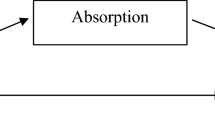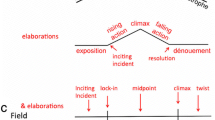Abstract
The present paper presents an emotion module from an authoring tool of interactive storytelling being developed within the European Project—INSCAPE. The Atmosphere Editor (AE) is an INSCAPE software plug-in. Its aim is to help authors to easily create virtual interactive scenes that are recognized as emotional in order to contribute to higher coherence of their content and simultaneously to emphasize their communication purposes. It works through the attribution of emotional meaning to virtual environments and characters classes that act on the virtual story-world. Therefore, it is designed to produce a semantic intervention in the story but does not intend to transcend the storyteller work. AE presents then a taxonomy capable of sustaining the communicational optimization of the interactive narratives at an emotional level. The AE intervention develops in addition a possible pedagogical virtue permitting the learning by the story authors about potential emotional uses of specific virtual parameters. It permits also the INSCAPE user to understand the emotional semantics canons of the interactive virtual stories.
Similar content being viewed by others
References
Bolter, J.D., Grusin, R.A.: Remediation: Understanding New Media. MIT Press, Cambridge (1999)
Eladhari, M., Lindley, C.: Player character design facilitating emotional depth in MMORPGs. In: Digital Games Research Conference 2003, 4–6 November 2003. University of Utrecht, The Netherlands (2003)
Frijda, N.H.: The Emotions. Cambridge University Press, Cambridge (1986)
Harlow, H.F.: The nature of love. Am. Psychol. 13, 573–685 (1958). Acedido via http://psychclassics.yorku.ca/Harlow/love.htm
Klesen, M.: Using theatrical concepts for role-plays with educational agents. Applied Artificial Intelligence Special Issue Educational Agents—Beyond Virtual Tutors (2005)
Mao, W., Gratch, J.: Social causality and responsibility: modeling and evaluation, In: International Conference on Interactive Virtual Agents, Kos, Greece (2005)
Plantinga, C.: Introduction. In: Plantinga, C.R., Smith, G.M. (eds.) Passionate Views: Film, Cognition, and Emotion, Johns Hopkins University Press, Baltimore (1999)
Samyn, M.: Drama princess project, In: Tales-of-Tales. http://www.tale-of-tales.com/DramaPrincess (2006)
Sanders, A.F.: Towards a model of stress and human performance. Acta Psychol. 53, 61–97 (1983)
Zagalo, N.: Convergência entre o Cinema e a Realidade Virtual. PhD Thesis, Departamento de Comunicação e Arte, Universidade de Aveiro, Portugal (2007). http://biblioteca.sinbad.ua.pt/teses/2008001260
Zagalo, N., Torres, A., Branco, V.: Passive interactivity, an answer to interactive emotion. In: 5th International Conference on Entertainment Computing. Lecture Notes in Computer Science, vol. 4161. Springer, New York (2006). ISBN: 3-540-45259-1
Author information
Authors and Affiliations
Corresponding author
Rights and permissions
About this article
Cite this article
Zagalo, N., Torres, A. Character emotion experience in virtual environments. TVC 24, 981–986 (2008). https://doi.org/10.1007/s00371-008-0272-6
Published:
Issue Date:
DOI: https://doi.org/10.1007/s00371-008-0272-6




